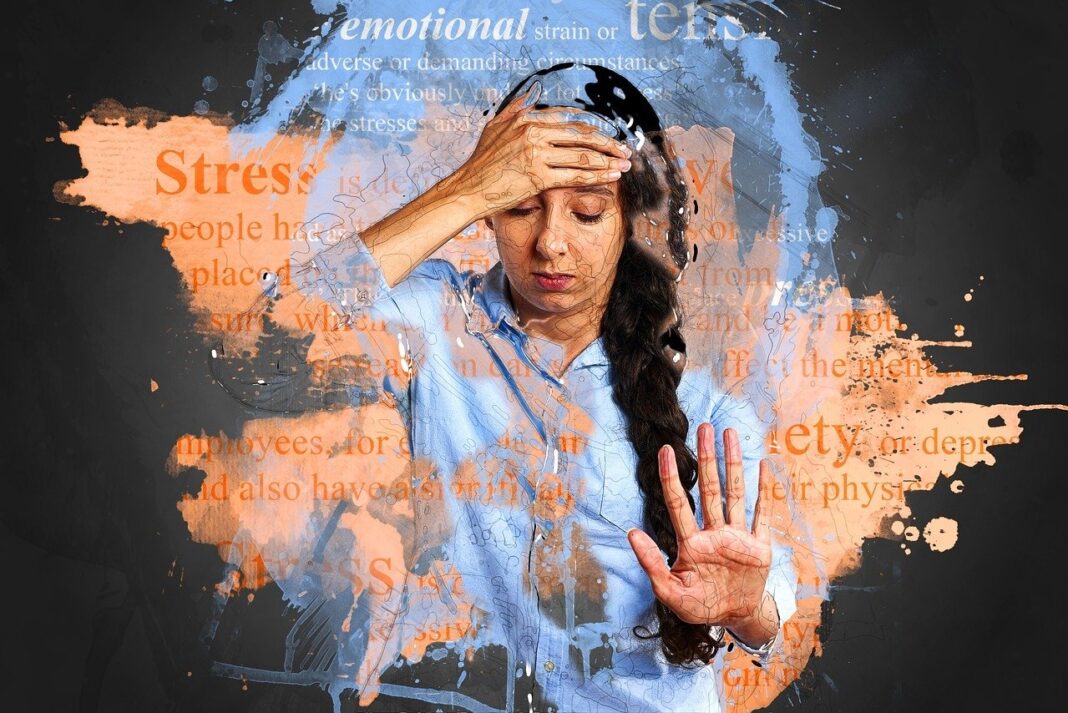Seasonal Affective Disorder, commonly known as SAD, is more than just the “winter blues.” It’s a type of depression that’s directly linked to changes in seasons. Imagine your mood sinking as the days grow shorter and colder — that’s what millions of people experience every year with SAD. Let’s dive into what exactly SAD is, how it manifests, and what can be done to manage it.

What is Seasonal Affective Disorder?
SAD is a form of depression that typically starts in the late fall and continues through the winter months. Some people may also experience SAD during the spring or summer, but the majority face this condition in the colder seasons. It’s believed that the lack of sunlight affects certain chemicals in the brain, which leads to symptoms of depression, fatigue, and lack of energy.
The History and Discovery of SAD
How was SAD first identified?
While people have likely experienced SAD for centuries, it wasn’t officially recognized until the 1980s when psychiatrist Norman Rosenthal coined the term. His research opened the door to better understanding how seasonal changes could influence mood and mental health.
Who is most affected by SAD?
Women are more likely to suffer from SAD than men, and the condition is more prevalent in people living in northern latitudes where daylight hours are much shorter during the winter. However, SAD can affect anyone, regardless of age or location.
The Science Behind SAD
How changes in daylight affect mood
Our biological clocks, also known as circadian rhythms, are largely influenced by natural light. As the days shorten, our exposure to sunlight decreases, which can disrupt these rhythms, leaving us feeling out of sync and lethargic.
The role of melatonin and serotonin
Two key hormones play a role in SAD: melatonin, which affects sleep, and serotonin, which affects mood. Less sunlight triggers higher melatonin production, making us feel more tired. At the same time, it reduces serotonin levels, leading to feelings of sadness or depression.
Common Myths About SAD
It’s important to debunk myths surrounding SAD. For instance, some believe SAD is just “being lazy” during the winter. This couldn’t be further from the truth. SAD is a legitimate, diagnosable condition that can have a profound impact on one’s quality of life.
SAD manifests in various ways, impacting emotional, physical, and cognitive health.
Emotional Symptoms
Depression and low energy
One of the hallmark symptoms of SAD is a persistent low mood. You might feel sad, empty, or hopeless, and even the simplest tasks can feel like climbing a mountain.
Irritability and mood swings
People with SAD often experience irritability, and small things can trigger emotional outbursts or mood swings. It’s as if your emotions are on a rollercoaster, with little warning of the drops ahead.
Physical Symptoms
Fatigue and sleep problems
Fatigue is a big part of SAD, often linked to the overproduction of melatonin. You may find yourself sleeping longer than usual or struggling with insomnia.
Appetite and weight changes
Many people with SAD experience changes in their eating habits, particularly a craving for carbohydrates, which can lead to weight gain.
Cognitive Symptoms
Difficulty concentrating
Your ability to focus may also take a hit. Tasks that once seemed straightforward become difficult, as your mind feels foggy.
Memory issues
Some people with SAD also report memory problems, such as forgetting small details or struggling to recall important information.
Several factors can increase the risk of developing SAD.
Geographic Location
Living farther from the equator can increase your risk of SAD due to the dramatic decrease in sunlight during the fall and winter.
Age and Gender
Younger people, especially women, are more likely to develop SAD. Hormonal changes and fluctuations could be a contributing factor.
Family History and Genetics
If SAD or other forms of depression run in your family, you’re at a higher risk of experiencing it yourself.
Hormonal Imbalance and Vitamin Deficiency
A deficiency in Vitamin D — often caused by reduced sunlight exposure — can exacerbate SAD symptoms. This vitamin plays a crucial role in maintaining mental health.
Getting an accurate diagnosis for SAD is important because its symptoms overlap with other mental health conditions.
How SAD is Diagnosed
Psychological evaluations
Doctors typically use psychological evaluations to determine whether you have SAD. They’ll ask about your symptoms, mood, and seasonal patterns.
Medical tests and assessments
In some cases, doctors might run blood tests to rule out other conditions, such as thyroid disorders or vitamin deficiencies.
How to Differentiate SAD from Other Depression Types
Unlike major depression, SAD follows a seasonal pattern. If your symptoms lift in the spring and return in the fall, that’s a strong indicator of SAD.
Thankfully, SAD is treatable with a variety of methods.
Light Therapy
How does light therapy work?
Light therapy involves sitting in front of a specially designed light box for about 20-30 minutes each day. This exposure to artificial light helps regulate your circadian rhythms and boost serotonin production.
Recommended light boxes and devices
When choosing a lightbox, look for one that delivers at least 10,000 lux. Popular brands include Verilux and Carex, which are specifically designed for SAD treatment.
Cognitive Behavioral Therapy (CBT)
Techniques used in CBT for SAD
CBT helps you identify and change negative thought patterns that may exacerbate your SAD symptoms. Techniques like journaling, mindfulness, and setting realistic goals are often used.
Benefits of therapy over medication
While medications can be helpful, therapy provides tools that last a lifetime, making it an effective long-term solution.
Medications
Antidepressants used for SAD
Selective serotonin reuptake inhibitors (SSRIs), like fluoxetine or sertraline, are commonly prescribed to help balance serotonin levels during the winter months.
Side effects and concerns
Like any medication, antidepressants come with potential side effects, including nausea, weight gain, and insomnia. It’s important to consult your doctor to find the right treatment plan.
Natural Remedies and Supplements
The role of Vitamin D
Since sunlight exposure is limited during the winter, many doctors recommend taking Vitamin D supplements to help manage SAD symptoms.
Herbal treatments and dietary changes
Some herbal remedies, such as St. John’s Wort, and a diet rich in omega-3 fatty acids, can also improve mood and overall mental health.
Incorporating lifestyle changes can help you manage SAD more effectively.
Maintaining a Regular Routine
Establishing a consistent daily routine helps regulate your body’s internal clock and stabilizes your mood.
Exercise and Physical Activity
Exercise is a natural mood booster, releasing endorphins that counteract depression. Even a short walk outside can make a big difference.
Socializing and Staying Connected
Spending time with loved ones can lift your spirits and remind you that you’re not alone in your struggles.
Improving Sleep Hygiene
Adjusting your sleep schedule
Going to bed and waking up at the same time each day can help you avoid the sleep disturbances common with SAD.
Using a dawn simulator
A dawn simulator gradually increases the light in your room in the morning, mimicking a sunrise and helping you wake up more naturally.
Taking proactive steps can reduce your chances of developing SAD.
Early Detection and Intervention
If you know you’re prone to SAD, start treatments like light therapy or Vitamin D supplements early in the fall, before symptoms fully set in.
Monitoring Your Mood
Keeping a journal or using a mood-tracking app can help you stay aware of changes in your mental health.
Building Healthy Habits Year-Round
Maintaining a balanced diet, exercising regularly, and spending time outdoors are great habits that can help prevent SAD symptoms from worsening.
If someone you know is struggling with SAD, here’s how you can support them.
Recognizing the Signs in Someone Else
Look for changes in mood, energy levels, and behavior, especially if they coincide with the changing seasons.
How to Provide Emotional Support
Listen without judgment and offer reassurance. Sometimes, just being there is enough to help someone through their difficult moments.
Encouraging Professional Help
If the symptoms worsen, encourage your loved one to seek professional help, whether it’s through therapy, medication, or light therapy.
Winter can be tough, but there are ways to make it more bearable.
Finding Enjoyment in Winter Activities
Engage in fun winter activities like skiing, ice skating, or even just a walk through a snowy park. Finding joy in the season can help shift your mindset.
Using Technology to Brighten Your Environment
Use light boxes, smart lighting systems, and even apps that simulate sunshine to brighten your living space during the dark months.
Setting Realistic Goals and Expectations
Don’t overextend yourself during the winter. Focus on small, achievable goals to maintain a sense of accomplishment.
If left untreated, SAD can have significant long-term consequences.
Impact on Mental Health
Chronic depression can lead to more severe mental health conditions, including anxiety disorders and major depressive episodes.
Relationship Strain
SAD can put a strain on personal relationships, as mood swings and low energy levels make it difficult to connect with others.
Work and Daily Life Challenges
Untreated SAD can also affect your ability to perform at work or manage daily responsibilities, leading to potential job loss or financial strain.
What are the first signs of SAD?
The first signs of SAD often include feeling unusually tired, low, or irritable as the seasons change, particularly as winter approaches.
Can SAD occur in the summer?
Yes, although less common, some people experience SAD during the summer months. This is known as reverse SAD.
How long does SAD last each year?
SAD typically lasts for about 4-5 months, starting in the fall and lifting in the spring when daylight hours increase.
Is SAD more common in certain parts of the world?
Yes, SAD is more common in areas farther from the equator, where daylight hours significantly decrease during the winter.
Can lifestyle changes alone treat SAD?
In mild cases, lifestyle changes like regular exercise, a healthy diet, and light exposure can help manage symptoms. However, more severe cases often require therapy or medication.
By understanding Seasonal Affective Disorder, you can take proactive steps to manage its effects and maintain your mental health year-round.




